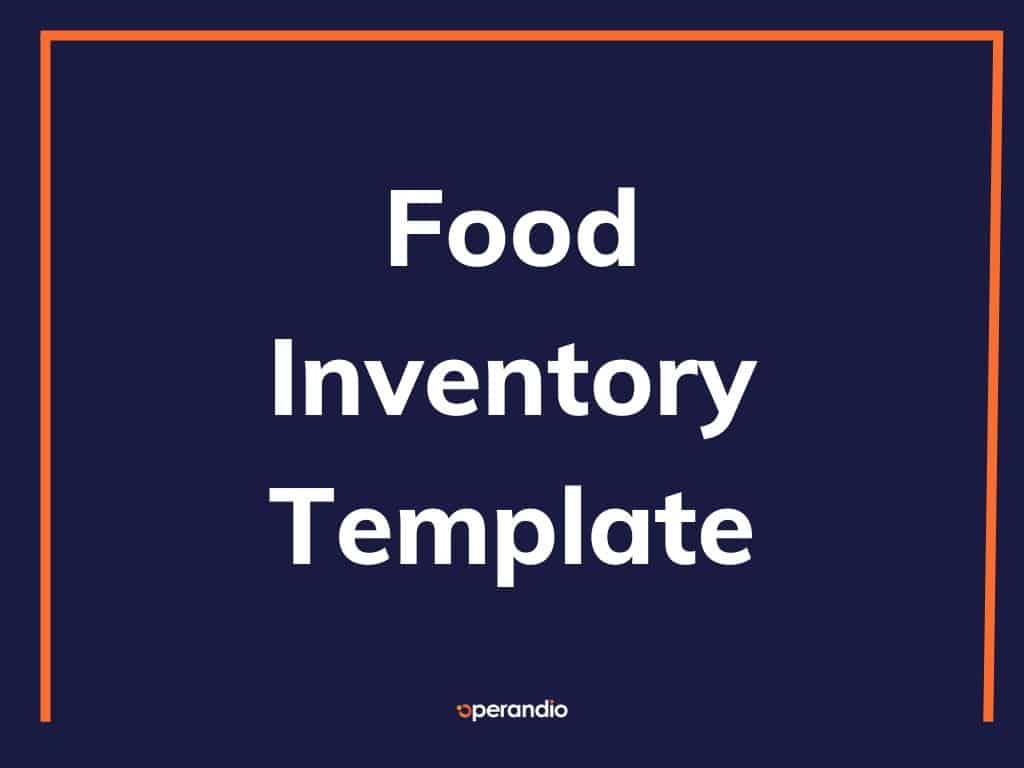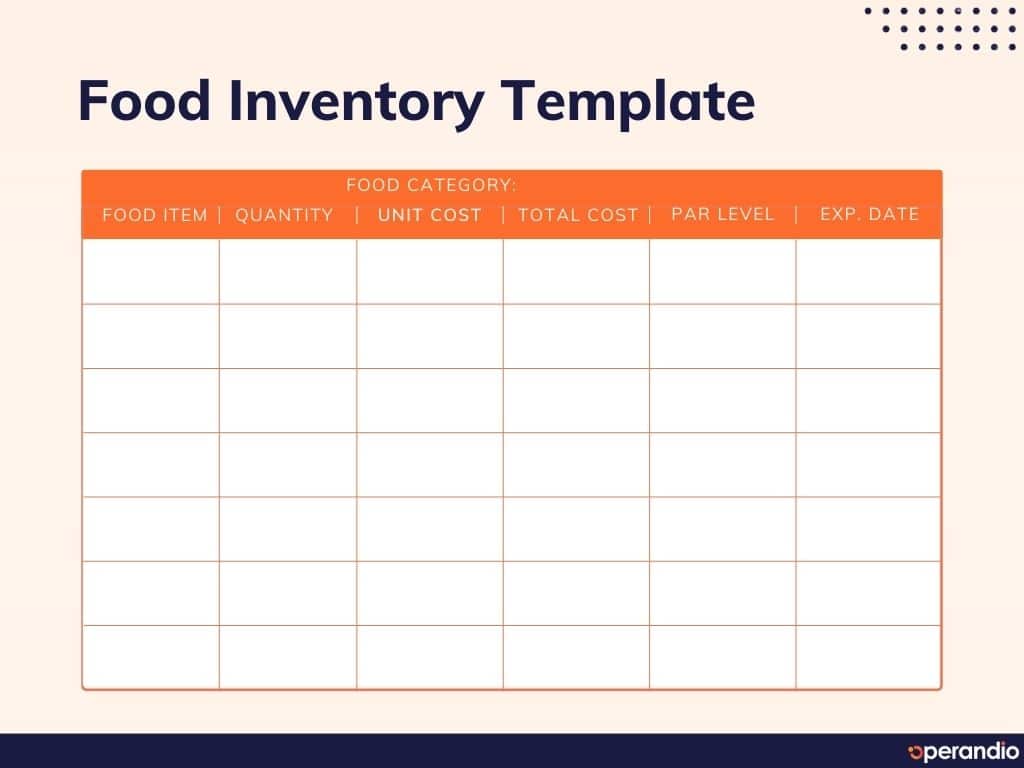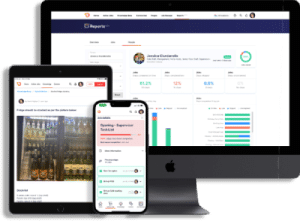Food Inventory Template
A food inventory template is an important tool for any business that handles food, as it facilitates food inventory management. This involves tracking the quantity, location, and condition of each item in inventory, and monitoring usage and waste.
Effective food inventory management is important for ensuring that a business has the necessary ingredients and products to meet customer demand, while minimising waste and avoiding overstocking.


What are the benefits of using a food inventory template?
Using a food inventory template comes with a lot of benefits that help a business effectively manage its food stock. These benefits include;
Improved inventory management
A food inventory template provides a structured way to track inventory levels, which can help businesses to better manage their stock. This can help to reduce the likelihood of overstocking or understocking, which can help to reduce waste and increase efficiency.
Better cost control
By tracking inventory levels, a food inventory template can help businesses to manage their costs more effectively. This can help to reduce the amount of money spent on food items that are wasted or spoiled, and ensure that businesses have the necessary ingredients to meet customer demand.
More accurate ordering
A food inventory template can help businesses to order the correct amount of food items, reducing the likelihood of overstocking or understocking. This can help to reduce waste from expired or spoiled food items, and reduce the need for emergency orders or rush shipments.
Improved menu planning
A food inventory template can help businesses to plan their menus more effectively, based on the items that are in stock. This can help to ensure that food items are used before they expire, reducing the likelihood of waste.
Better communication
A food inventory template can be shared among staff members, allowing for better communication and coordination. This can help to ensure that everyone is aware of what items are in stock, and can work together to use them effectively.
Food inventory template example
| Food Category: | |||||
| Food Item | Quantity | Cost Per Unit | Total Cost | Par Level | Expiry Date |
What does a food inventory template contain?
Typically, a food inventory template will have the following information;
- The food category (i.e. meat, dairy, vegetables and legumes, etc.)
- The food item in question
- The quantity of that food
- The cost per unit
- The total cost (quantity * price)
- The par level (e.g. the quantity of this stock you need)
- Expiry dates
Once you have this information recorded in your document, you can use multiple food inventory documents to identify trends in your food inventory, such as;
- What food inventory are you running out of quickly?
- What foods do you have an excess of?
- What foods are being thrown away because they expire before you can use them?
- Are there foods that are costing you more money than they should?
Tips for using a food inventory template
Keep the inventory up-to-date
It’s important to update the food inventory regularly, ideally on a daily basis, to ensure that it reflects the current stock levels. This will help to ensure that staff members have accurate information to work with when planning menus or ordering food items.
Be consistent
Use a standardised format for the food inventory template, with clearly defined categories for different types of food items. This will help to ensure that the template is easy to read and use, and that staff members are able to find the information they need quickly and easily.
Use technology to make the process easier
Use technology to track inventory levels, as this can help to reduce errors and improve efficiency.
Operandio is software that comes with many features that can help take the hassle out of tracking inventory; such as a knowledge base that stores all the information about your business, and procedure tracking that ensures that all of your inventory related tasks are being completed on time.
Set par levels
Par levels are the minimum amount of inventory that should be maintained at all times, to ensure that there is always enough stock to meet customer demand. Set par levels for each food item, and update them as necessary based on usage and demand.
Track waste
Use the food inventory template to track waste and spoilage, including the reason for the waste and the quantity of food items discarded. This will help to identify areas where improvements can be made to reduce waste and improve efficiency.
Train staff members
Make sure that all staff members are trained on your food inventory tracking procedures. This will help to ensure that everyone is on the same page and can work together to reduce waste and improve efficiency.
Request an Operandio demo today, and take the hassle out of your food inventory management today.
Try Operandio for free
Get started in less than 2 minutes.
By signing up, you accept the Subscription Agreement and Privacy Policy.
